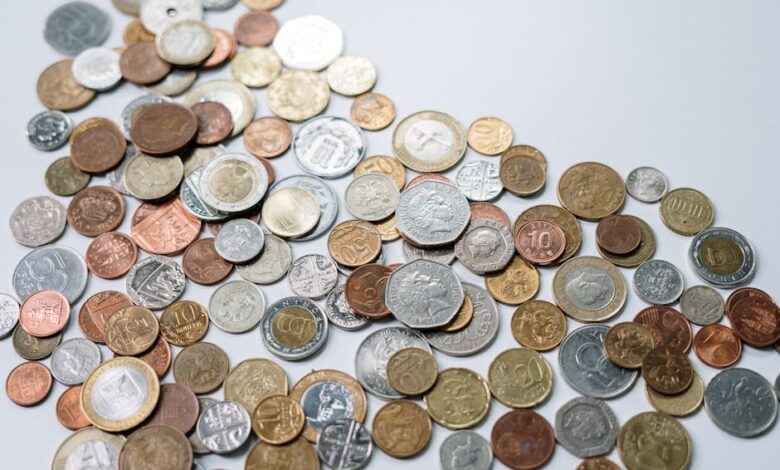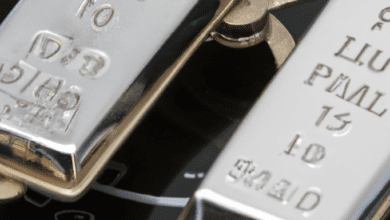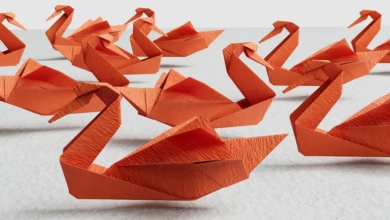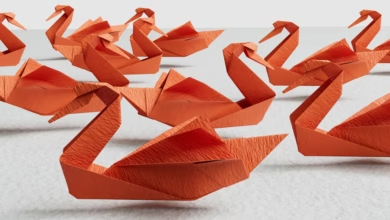Metals in Motion: Exploring Industrial Demand, Investment Strategies, and Economic Indicators

In an era where economic dynamics and technological advancements are increasingly intertwined, the significance of metals in both industrial and investment landscapes cannot be overstated. From the reflective luster of silver to the robust applications of copper, the role of these essential materials extends far beyond their aesthetic and functional uses. This article delves into multiple facets of the metal market, exploring silver's dual role as both a crucial industrial component and a sought-after investment asset. We will examine how copper prices serve as vital indicators of global economic health, while also highlighting the growing demand for rare earth metals driven by the rise of green energy technologies. Additionally, we will compare platinum and palladium to determine which offers better investment potential, and discuss how metals can effectively diversify an investment portfolio amidst fluctuating economic conditions. As inflation exerts pressure on the prices of precious and industrial metals, and as mining regulations shape market dynamics, we will also consider the future of aluminum in the context of a sustainable economy. Join us as we navigate the complex and evolving landscape of metals, shedding light on their critical roles in our modern world.
- 1. "Silver's Dual Role: Industrial Applications and Investment Appeal"
- 2. "Copper Prices as Economic Barometers: Insights into Global Health"
- 3. "Navigating the Rare Earth Landscape: Green Energy's Demand Surge"
1. "Silver's Dual Role: Industrial Applications and Investment Appeal"
Silver plays a unique dual role in the global economy, functioning both as a critical industrial metal and a sought-after investment asset. In the industrial sector, silver is renowned for its exceptional conductivity, thermal properties, and resistance to corrosion, making it indispensable in various applications. It is widely used in electronics, solar panels, medical devices, and batteries, where its antimicrobial properties and efficiency enhance performance. As industries increasingly pivot towards advanced technologies, the demand for silver in sectors such as renewable energy and electronics is likely to rise, driven by innovations like electric vehicles and solar energy solutions.
On the investment side, silver is often viewed as a safe haven asset, similar to gold, especially during economic uncertainty and inflationary periods. Investors are drawn to silver for its potential to hedge against currency depreciation and stock market volatility. Historically, silver has exhibited a strong correlation with gold, serving as an alternative investment for those looking to diversify their portfolios. Additionally, silver's relatively lower price point compared to gold allows investors to acquire larger quantities, making it accessible to a broader audience.
The interplay between silver’s industrial demand and its investment appeal creates a dynamic market environment. While industrial applications can drive prices up during periods of economic growth, investment demand often surges during times of financial instability. This duality not only influences silver's price volatility but also underscores its importance in both industrial advancements and as a financial asset, making it a unique player in the metals market. As the world continues to evolve, silver’s role in both sectors will likely expand, further solidifying its status as a critical commodity.
2. "Copper Prices as Economic Barometers: Insights into Global Health"
Copper prices have long been viewed as a reliable indicator of global economic health, often referred to as "Dr. Copper" due to its ability to diagnose economic trends. This relationship stems from copper's extensive use in various industries, including construction, electronics, and manufacturing. As a key component in electrical wiring and plumbing, demand for copper typically rises during periods of economic expansion when infrastructure projects and manufacturing activities ramp up. Conversely, a decline in copper prices can signal economic slowdowns, as reduced industrial activity leads to diminished demand.
Several factors influence copper prices, including supply chain dynamics, geopolitical tensions, and shifts in global demand. For instance, the rise of emerging economies, particularly in Asia, has historically driven copper demand, reflecting rapid urbanization and industrialization. Additionally, fluctuations in mining output, driven by labor strikes or environmental regulations, can create volatility in prices, further highlighting the metal's sensitivity to economic conditions.
Moreover, copper prices often respond to macroeconomic indicators such as GDP growth rates, manufacturing indices, and consumer spending. Investors and analysts closely monitor these trends to gauge potential economic shifts. For example, a surge in copper prices may suggest increased construction activity and manufacturing output, while falling prices could indicate a contraction in these sectors.
In recent years, the push for green energy and electric vehicles has added another layer to the copper narrative. The transition to renewable energy technologies, which rely heavily on copper for wiring and infrastructure, is expected to bolster demand. This evolving landscape positions copper not only as a traditional economic barometer but also as a critical component in the sustainable energy transition, further intertwining its price movements with global economic health.
3. "Navigating the Rare Earth Landscape: Green Energy's Demand Surge"
The demand for rare earth metals is experiencing a significant surge, largely driven by the global transition toward green energy technologies. These metals, which include elements like neodymium, dysprosium, and lanthanum, are crucial for the production of high-performance magnets, batteries, and other components found in renewable energy systems and electric vehicles.
As countries commit to reducing carbon emissions and investing in clean energy, the reliance on rare earth metals has intensified. For instance, wind turbines utilize rare earth magnets for efficient power generation, while electric vehicles depend on rare earth elements for their batteries and electric motors. This growing demand is not only reshaping the landscape of the rare earth market but also placing pressure on supply chains that are often vulnerable to geopolitical factors and production constraints.
Moreover, the extraction and processing of these metals come with environmental considerations. The mining of rare earths can lead to significant ecological disruption if not managed responsibly. As such, there is a rising emphasis on sustainable practices within the industry, including recycling and the development of alternative materials that could mitigate some of the environmental impacts associated with rare earth production.
Investors are increasingly recognizing the potential of rare earth metals as a strategic asset, particularly as governments and corporations aim to secure supply chains for green technologies. This trend suggests that the rare earth landscape will continue to evolve, balancing the urgency of meeting green energy demands with the need for sustainable and responsible sourcing practices. As the world shifts towards a more sustainable economy, the role of rare earth metals will become increasingly pivotal, making them a key focus for both industrial applications and investment opportunities.
In conclusion, the multifaceted roles of metals in both industrial and investment markets underscore their significance in today's economy. Silver, with its dual role as an essential industrial component and a favored investment asset, exemplifies how metals can serve multiple purposes. Similarly, copper prices provide vital insights into global economic health, acting as a barometer for economic activity and growth. The increasing demand for rare earth metals, driven by advancements in green energy technologies, highlights the intersection of sustainability and resource scarcity, shaping future market dynamics.
As we compare platinum and palladium, the nuances of each metal’s investment potential remind us of the importance of informed decision-making in diversifying portfolios. Furthermore, the interplay of inflation on the prices of precious and industrial metals reveals the complexities of economic factors influencing investment strategies. Looking ahead, the future of aluminum in a sustainable economy presents both opportunities and challenges, particularly as industries shift toward more eco-friendly practices.
Lastly, the impact of mining regulations on metal prices emphasizes the need for a balanced approach to resource extraction, sustainability, and economic stability. Collectively, these insights illustrate that metals are not merely commodities but critical components of a resilient and diversified investment landscape. As investors and industries navigate these evolving dynamics, understanding the intricate relationships between these elements will be crucial for making informed decisions in an ever-changing market.





